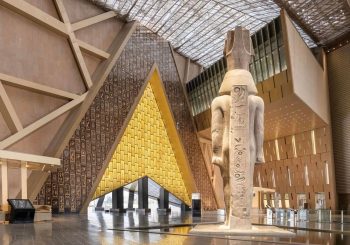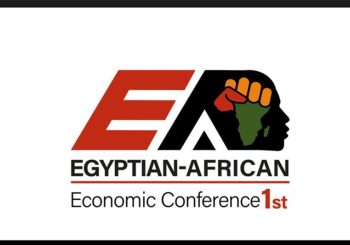Egypt’s Ministry of Tourism and Antiquities reopened the Imhotep Museum in Saqqara on Sunday, December 3, 2023 following a 21-month closure for extensive renovations.
Minister Ahmed Issa stated that the aim of the EGP 48 million (USD 1.5 million) refurbishment was to enhance the overall visitor experience at the site.
Imhotep, a prominent figure from the Third Dynasty, was renowned as a sage, physician, and astronomer, notably recognized as the architect behind King Djoser’s Step Pyramid at Saqqara.
Secretary General of the Supreme Council of Antiquities (SCA), Mostafa Waziry, highlighted that the renovation also features the addition of newly discovered artifacts from Saqqara by the Egyptian mission. Among these finds are mummified mongoose, crocodiles, and cats from the Bubastion cemetery—a Ptolemaic and Roman temple complex devoted to the goddess of protection, Bastet, nestled in the desert boundary of Saqqara.
The project also involves the establishment of cafeterias and bathrooms, along with enhancements to the lighting system.
The museum, spanning an area of 1,500 square meters, features six halls showcasing a total of 286 artifacts displayed in 27 showcases. The museum’s first hall features a remarkable painted limestone statue base of King Djoser from the 3rd Dynasty (2600 BC), bearing the titles of engineer and architect Imhotep.

In the second hall, a dedicated library houses books, periodicals, and publications on archaeology, along with handwritten manuscripts from the renowned French architect and Egyptologist Jean-Philippe Lauer, who spent 75 years uncovering the pyramid group of King Djoser at Saqqara.
The third hall showcases significant models of architectural elements within the Djoser pyramid complex, while the fourth focuses on Saqqara tombs, containing essential possessions of kings from the 5th and 6th Dynasties.
The Saqqara Pattern Hall, the fifth section, displays a variety of vessels discovered within the pyramids of King Djoser and some 2nd Dynasty kings, along with important wooden and stone sculptures of senior officials.
The final hall, named the Missions Hall, showcases key artifacts excavated by both Egyptian and foreign missions at Saqqara. Additionally, a separate room features a film detailing the archaeological significance of Saqqara, providing visitors with a comprehensive understanding of the site’s historical importance.
The museum also includes the oldest known royal mummy, belonging to King Merenre I, the fourth ruler of the 6th Dynasty, and showcases the oldest collection of bronze surgical instruments dating back to 4,400 BC.







Comment (1)
[…] openings and conservation efforts to highlight are the re-opening of the Ben Ezra synagogue, the Imhotep Museum, and the Greco-Roman museum in Alexandria following renovation and conservation work, the operation […]